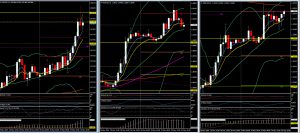USDJPY, H1
US housing starts fell -30.2% to a 0.891 mln pace in April that was weaker than assumed. Yet, building permits fell by -20.8% to a more resilient 1.074 mln pace, housing completions fell by a moderate -8.1%, and the important starts under construction series slipped by just -1.7% to leave a level that sits above the pace as recently as December. Overall, the mix of data beat estimates despite the disappointing starts headline. Note that starts in the multi-family sector under-performed single family homes for a third month, and starts fell in all four regions for a second month, again led by the northeast. Housing starts are tracking a -74% contraction rate in Q2 to a 1.064 mln pace, while permits are contracting at a -46% pace in Q2 and we expect a 1.238 mln average. Starts under construction, which drive the residential component of GDP, is on track for a Q2 contraction rate of just -9% after a solid 16.1% (was 15.9%) Q1 growth rate. We still expect no net revision in the -4.8% Q1 GDP contraction rate, followed by a -38% Q2 GDP contraction rate. Residential construction is likely contracting in Q2 at a -21% rate, following an estimated 17.2% (was 21.0%) growth pace in Q1, as this sector is showing considerably less weakness than the overall economy.
Fed Chair Powell’s written testimony noted the unprecedented impacts of the coronavirus and the mitigation measures that have caused sharp declines in output and employment. He didn’t discuss anything new, but reiterated that the Fed’s “response to this extraordinary period has been guided by our mandate to promote maximum employment and stable prices for the American people, along with our responsibilities to promote stability of the financial system. We are committed to using our full range of tools to support the economy in this challenging time even as we recognize that these actions are only a part of a broader public-sector response. Congress’s passage of the Coronavirus Aid, Relief, and Economic Security Act (CARES Act) was critical in enabling the Federal Reserve and the Treasury Department to establish many of the lending programs” which he went on to discuss.
USDJPY rallied, principally on a weaker Yen, to breach 108.00, EURUSD moved to 1.0970 before declining to test the 20-hour moving average for the first time in 24-hours (1.0925) and Cable too, holds over 1.2200 but has remained capped all-day by R1 and a 50.Fib level around 1.2250.
Click here to access the HotForex Economic Calendar
Stuart Cowell
Head Market Analyst
Disclaimer: This material is provided as a general marketing communication for information purposes only and does not constitute an independent investment research. Nothing in this communication contains, or should be considered as containing, an investment advice or an investment recommendation or a solicitation for the purpose of buying or selling of any financial instrument. All information provided is gathered from reputable sources and any information containing an indication of past performance is not a guarantee or reliable indicator of future performance. Users acknowledge that any investment in Leveraged Products is characterized by a certain degree of uncertainty and that any investment of this nature involves a high level of risk for which the users are solely responsible and liable. We assume no liability for any loss arising from any investment made based on the information provided in this communication. This communication must not be reproduced or further distributed without our prior written permission.



















